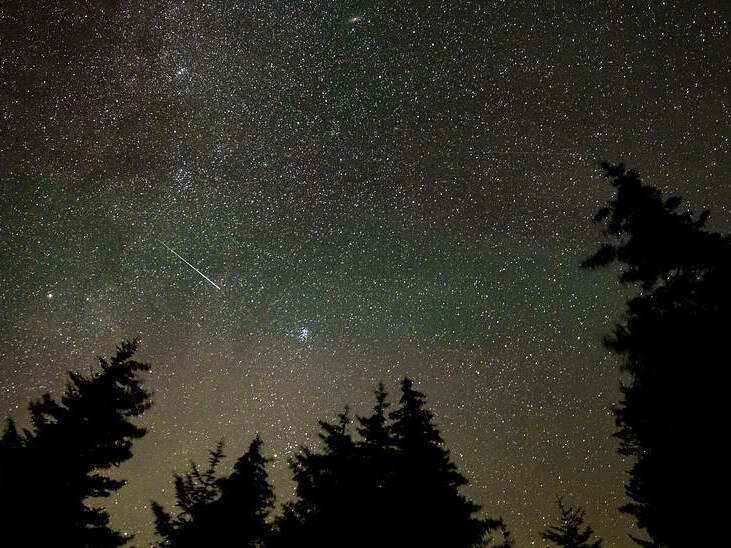Section Branding
Header Content
The Perseid meteor shower peaks this weekend. Here's how to watch
Primary Content
Get ready for some shooting stars — this weekend is the peak of the annual Perseid meteor shower, the beloved astronomical event that sends bright streaks of light streaming across the night sky.
This year's show should be a good one, "mainly because the moon isn't going to interfere," says Michelle Nichols, director of public observing with the Adler Planetarium in Chicago. "We can have different reasons why a meteor shower may be better one year versus the next, and a lot of times it's the phase of the moon."
Because the waning crescent moon will be just a little sliver that rises late, the sky will be dark, creating the ideal backdrop for the meteor shower's celestial fireworks.
Plus, the fact that the peak arrives on the weekend means that many folks can stay up late or get up before dawn without the usual worries about having to go to work after losing sleep.
The Perseids happen every summer when the Earth plows through a cloud of debris associated with a comet named Swift–Tuttle. The bits of comet stuff are tiny, and can be as small as a grain of sand. But when they hit the atmosphere at high speeds, "friction causes that stuff to heat up, and it causes the air around it to glow," says Nichols.
While the Perseid shower has technically been underway since mid-July, the greatest number of meteors should be visible in the early, pre-dawn hours of Sunday, August 13.
"If you're out in a dark sky, without a moon, you can probably see at least 50 to 60 per hour, during the last hour before dawn," says Robert Lunsford, who works with the American Meteor Society.
When it first gets dark on the night of Saturday, August 12, the source of the meteors will lie close to the northern horizon, he explains, "so a lot of the activity is going to be blocked by the horizon. As the night progresses, the source of meteors will rise higher in the sky. It'll be highest just before dawn, and that's when you'll see the most activity."
If you can't sky-watch during the peak, or if clouds spoil your view, you can also try in the days before and after, when the shower is active but less intense.
The best viewing will come under clear skies that aren't too affected by ambient light from cities and towns. To see the incoming meteors, just go outside, sit in a nice chair, get comfortable, look about halfway up the sky and give your eyes at least 20 to 30 minutes to adapt to the darkness, says Lunsford. There's no need to look in any particular direction or at any one spot.
"Sometimes you'll see fireballs of different colors that leave a trail in the sky for up to a minute or so," says Lunsford. "It's very cool."
Those fireballs are a big part of the draw for Jackie Faherty, an astronomer at New York City's Hayden Planetarium who makes a point to watch the Perseids each year.
"One can come that will shake you to your core," says Faherty. "It, like, scares you."
Sometimes people go outside, peer up at the sky briefly, and come away disappointed, she says. Part of the problem could be that the eyes haven't fully adjusted to the dark, but it's also true that the meteors don't happen at a consistent pace. For a while, nothing might happen, and then suddenly a slew will shoot across the sky in rapid succession.
"You cannot just be out there for 10 minutes. You have to commit to being there," says Faherty. "Really, 45 minutes to an hour is my recommended minimum. Get a glass of wine — or a bottle. Sit out there for a while. Give the sky a chance to entertain you."
Copyright 2023 NPR. To see more, visit https://www.npr.org.

